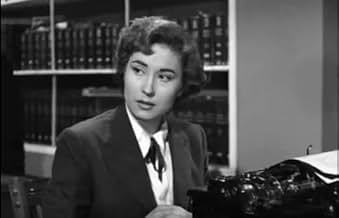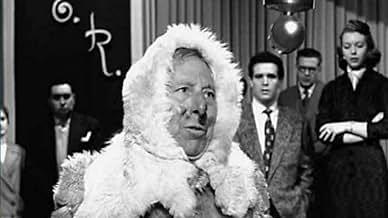There are many masterpieces in the Spanish movie comedy of the 40s, 50s, 60s and early 70s, but "Historias De La Radio" should undoubtedly have a place in the Top Ten. Director Sáenz De Heredia began to write a former version of the script while having a lunch break from the shooting of Terence Young´s "That Lady", in which he was working as a technical advisor. It almost seems a miracle (in spite of his enormous talent) that he could come up with such a bunch of good ideas for a comedy film in such a short spell of time. In the early 50s, before the arrival of television, the radio was the social communication medium par excellence and its influence in Spanish society was, for better or for worse, enormous. The picture shows how a radio programme could completely change the life of a person. It is divided in three short stories linked by a common bond which is also a sort of fourth story: the broadcasting of radio programmes in front of a live audience (something that seems to have disappeared now). In the first story we see how a poor inventor (the top-notch, rasping-voiced character actor José Isbert) must play the fool disguising himself as an eskimo and getting to the radio station before than anyone else in order to get some money to promote a piston that he and his "business partner" have invented. In the second story, a man who is stealing some money from the house of his landlord receives a random phone call from the studio and is given the possibility of earning a certain amount of money. (Doesn´t it sound familiar to you? Isn´t that a short gag from Woody Allen´s celebrated "Radio Days"?). In the third story, the schoolteacher of a small country village agrees reluctantly to participate in a quiz radio contest to achieve the money that it takes to operate one of his pupils, a loving child who is seriously ill and must be transferred to Sweden to be cured. Will he do it?... Well, I don´t want to spoil the party. The film is full of verbal and visual gags that could serve as a useful lesson to many so-called Spanish movie directors of nowadays and of faces of a big bunch of familiar lead and character actors that the Spanish viewers knew very well even if they couldn´t always put a name on them. And I wonder: WHY ON EARTH CAN´T A FILM LIKE THIS BE KNOWN OUTSIDE SPAIN? WHY CAN´T WE SHOW THIS FILM AND MANY OTHERS FROM THE PERIOD 1940-1975 TO THE REST OF EUROPE AND TO THE UNITED STATES SO THAT THEY CAN SEE THERE WAS A LOT OF GOOD SPANISH CINEMA IN THOSE YEARS? WHY, WHY, WHY...? Calling the film distributors, for God´s sake!































